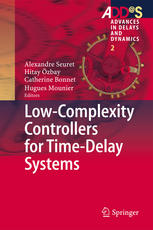

Most ebook files are in PDF format, so you can easily read them using various software such as Foxit Reader or directly on the Google Chrome browser.
Some ebook files are released by publishers in other formats such as .awz, .mobi, .epub, .fb2, etc. You may need to install specific software to read these formats on mobile/PC, such as Calibre.
Please read the tutorial at this link: https://ebookbell.com/faq
We offer FREE conversion to the popular formats you request; however, this may take some time. Therefore, right after payment, please email us, and we will try to provide the service as quickly as possible.
For some exceptional file formats or broken links (if any), please refrain from opening any disputes. Instead, email us first, and we will try to assist within a maximum of 6 hours.
EbookBell Team

0.0
0 reviewsThis volume in the newly established series Advances in Delays and Dynamics (ADD@S) provides a collection of recent results on the design and analysis of Low Complexity Controllers for Time Delay Systems. A widely used indirect method to obtain low order controllers for time delay systems is to design a controller for the reduced order model of the plant. In the dual indirect approach, an infinite dimensional controller is designed first for the original plant model; then, the controller is approximated by keeping track of the degradation in performance and stability robustness measures.
The present volume includes new techniques used at different stages of the indirect approach. It also includes new direct design methods for fixed structure and low order controllers. On the other hand, what is meant by low complexity controller is not necessarily low order controller. For example, Smith predictor or similar type of controllers include a copy of the plant internally in the controller, so they are technically infinite dimensional. However, they have very nice numerical properties from the point of reliable implementation. Therefore, such predictor-based controllers are considered as low complexity. This book includes new predictor-based design techniques, with several application examples.